January 2, 2021
Martha O'Kennon
This week ws rather like last week, except for a couple of times when the temperature shot up to the 50's F. Almost nothing seemed to have changed or grown in the near 32 F degrees weather. Let's see if we have enough to build a blog on out of two scant weeks of pictures.
I should have taken a few more pictures of the Coralberries and Snowberries, to show that there were bits of color this winter like last winter. So these three pictures were stolen from last winter's batch of pictures.



Remember that there is information in the name of the file for each image. You can see it by mousing over the
image - look at the lower left of the screen. Or you can click on the image to get to the (usually) larger image.
Then the info is displayed in the address line above. Sometimes the second click will actually display a
different view of the original image.
The Ants are mostly Small Honey Ants, as has been usual for this Fall and approaching Winter, which we will observe in two more days. First we see one in its usual size, and then two shots of another, YES, Small Honey Ant but with such an engorged abdomen. It has been extraordinarily lately, and the Ants have been soaking it up. Their abdomens allow the segments to expand to gather the available water.
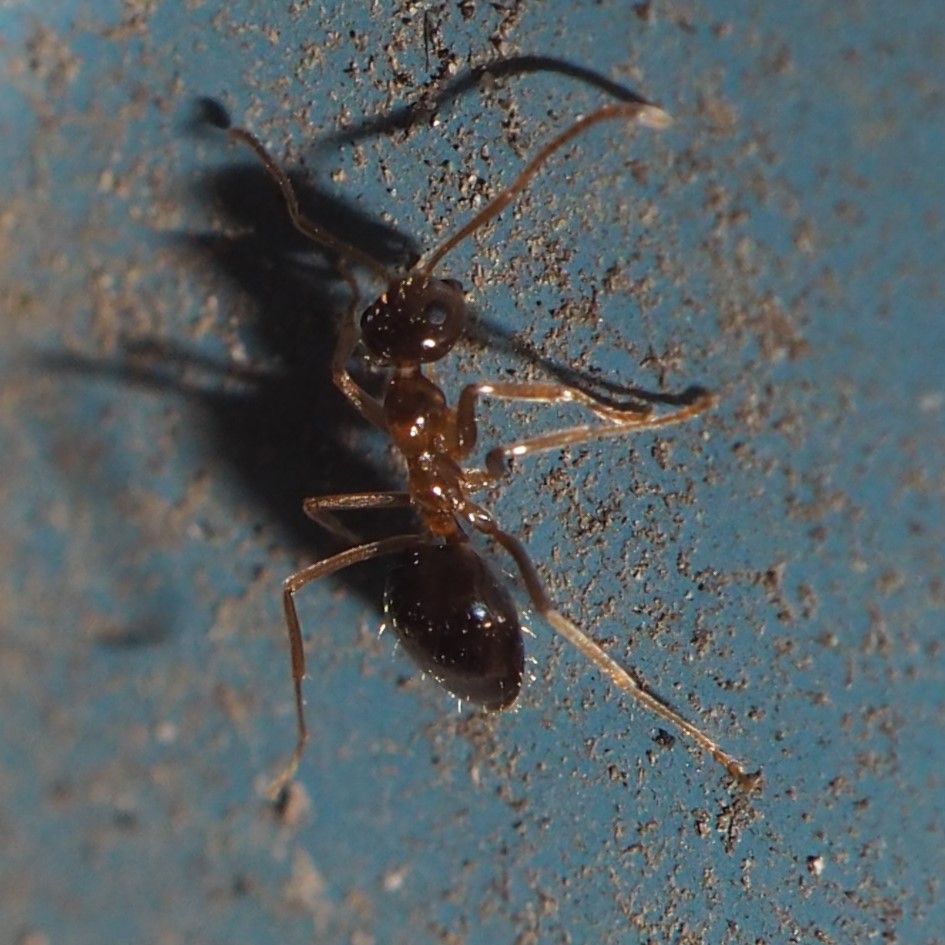
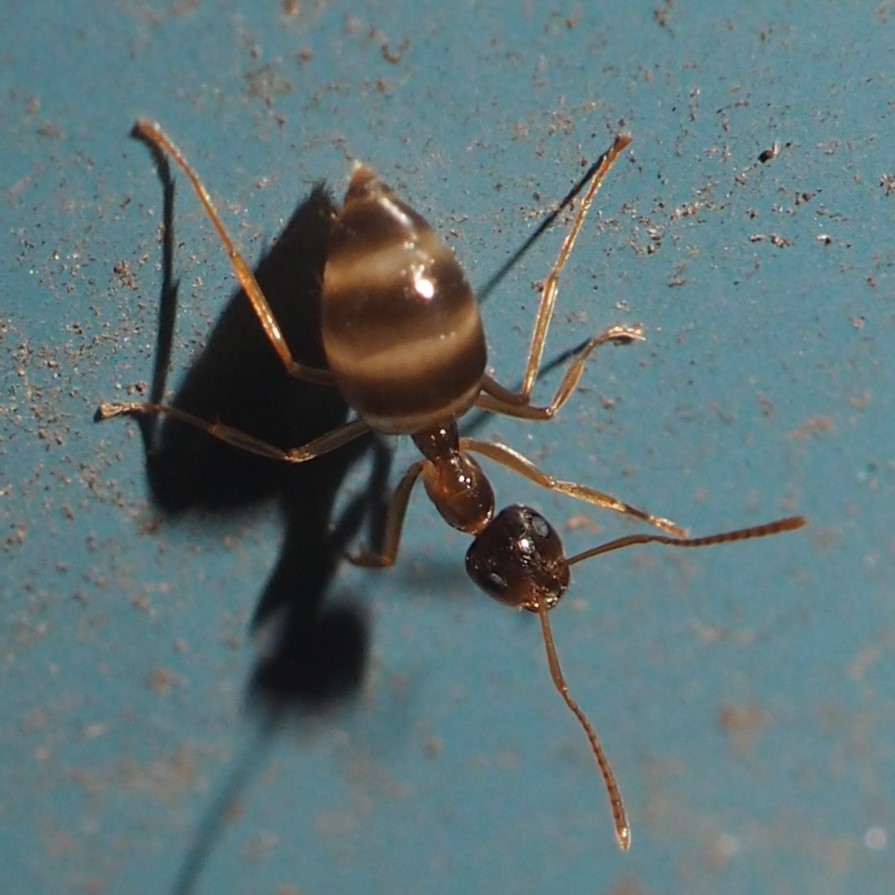

Here is a picture of a group of Small Honey Ants, who have found and may be feasting on a bluish Slug, who may seem fattened up on that same water. Second is the only non-Small Honey Ant I saw this week. It was determined on iNat that it is Lasius neoniger (a Turfgrass Ant).
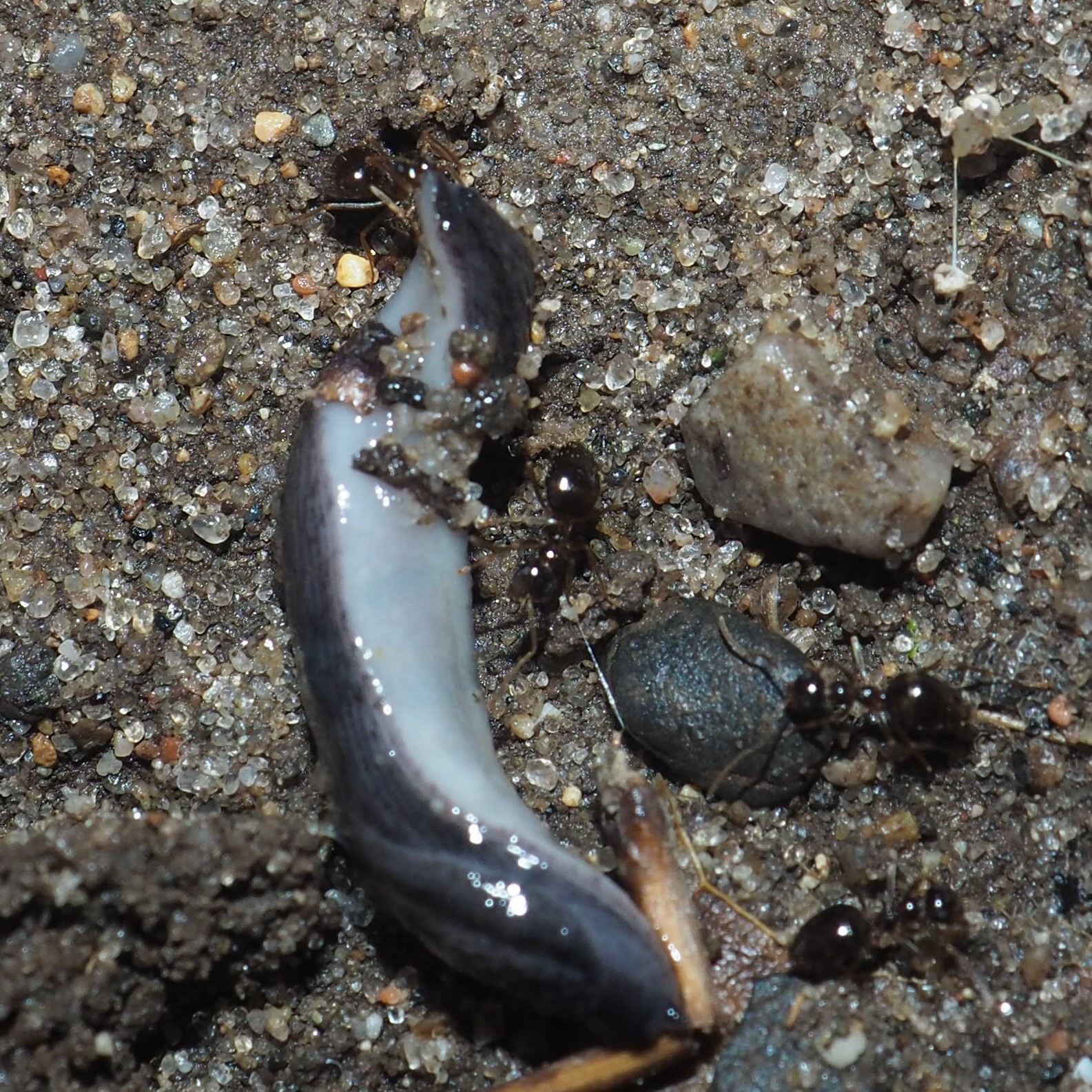
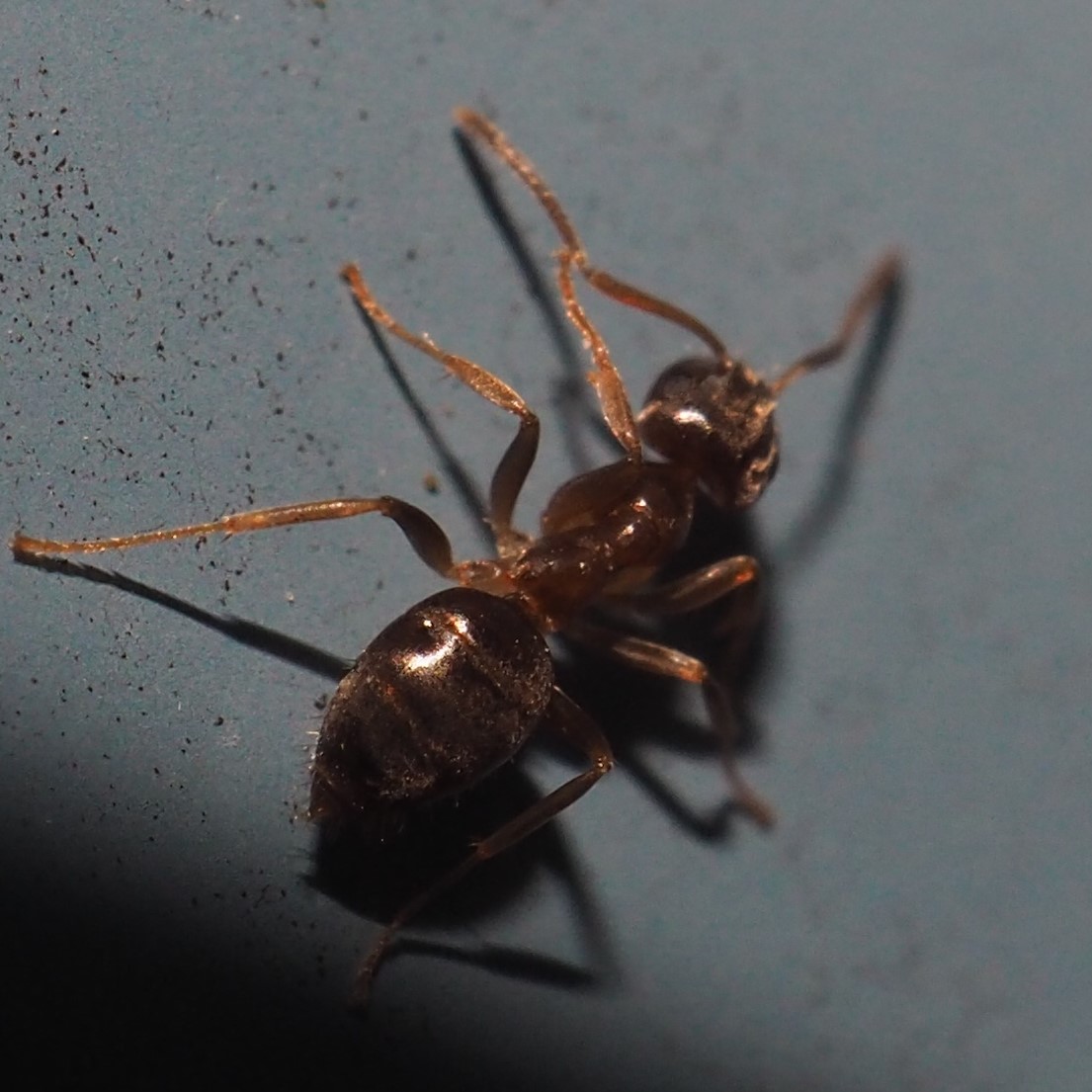
Since the partial denouement of the question "What kind of Barklice have eggs covered in the brown strawish material?", we saw last week that the eggs on East panel 7 from the South which we had been studying since October were discovered to have been separating from each other and showing up as whitish forms, which I thought might be nymphs getting ready to hatch. But over the week since then,
from December 12th to December 19th, little progress has been seen. Here I have been carrying my cell phone in "flashlight" mode so as to take pictures at night and also getting up early in the morning to try for an exciting picture! Wait! In picture 2, taken on December 19, we seem to have developed a few new features! See if you can find them.
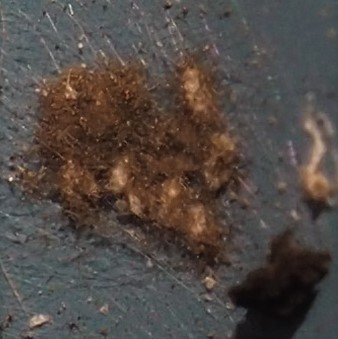
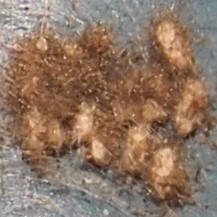
A few days ago, I investigated a tiny egg configuration quite a bit over my eye level, and have also been trying to discern any change in them to see what they will hatch into. Here is a picture from December 15th and another on December 19. Do you see any hatching in those 4 days? No? Well, me neither!

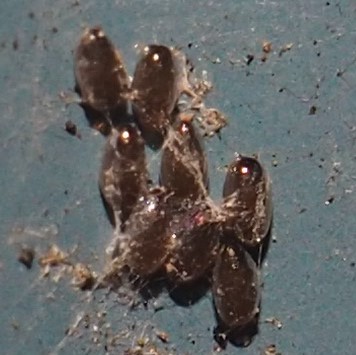
The reason I am intent on discovering what the nymphs will look like is that in the summer, I found a group of recently hatched nymphs just before they started spreading out. After a few days they had begun to look like nymphs that might turn out to be Metylophorus novaescotiae adults. Here they are on May 27, and then on successive days (May 30 and June 4, 2021) as they spread out and I begin to have a harder time finding any.
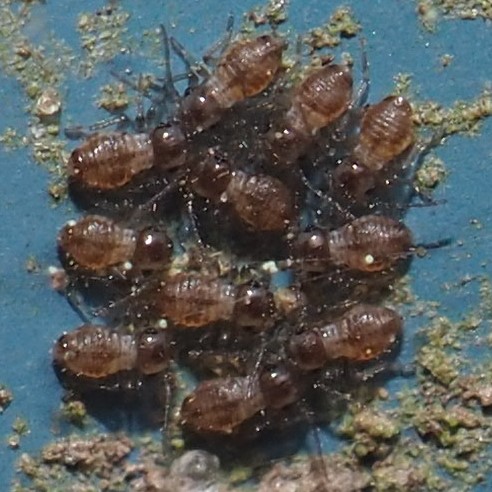
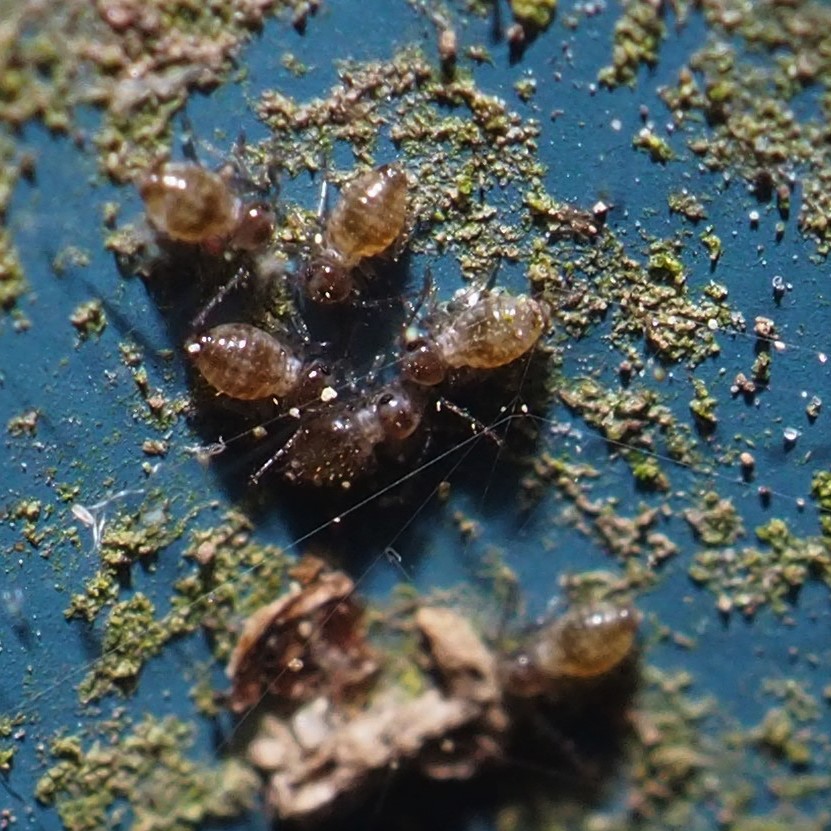
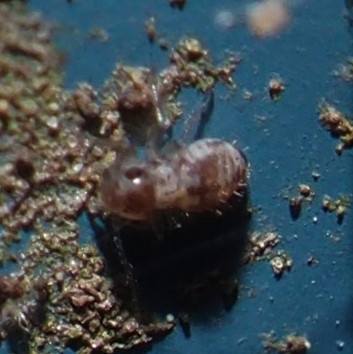
Here are our Mystery Nymphs, as they begin to seem more and more like the M. novaescotiae nymphs I'd seen before on June 1, June 5, and June 9.
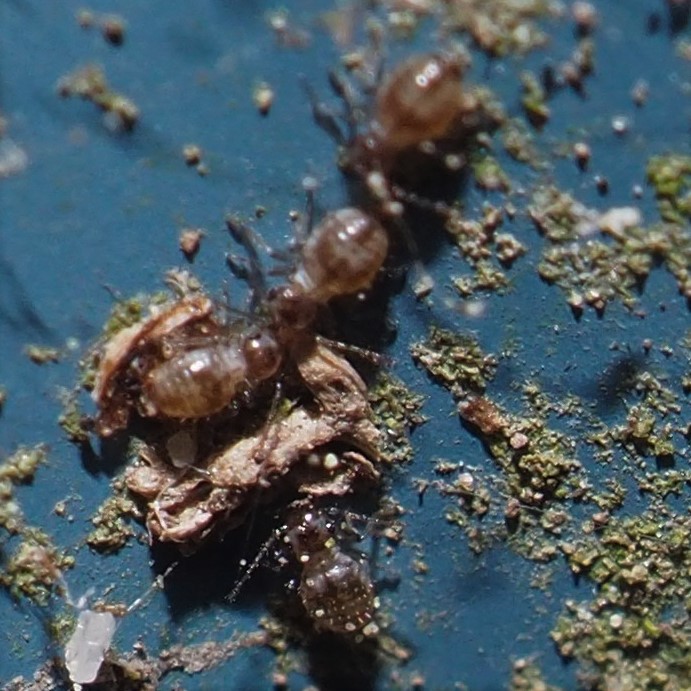
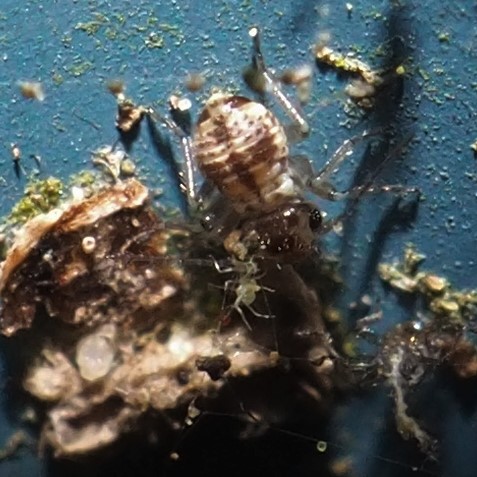

If you have time to peruse the whole sequence on Metylophorus, go here
Here is a quick glance helper on spotting M. novaescotiae. The triangle in the red circle is called a "pterostigma".
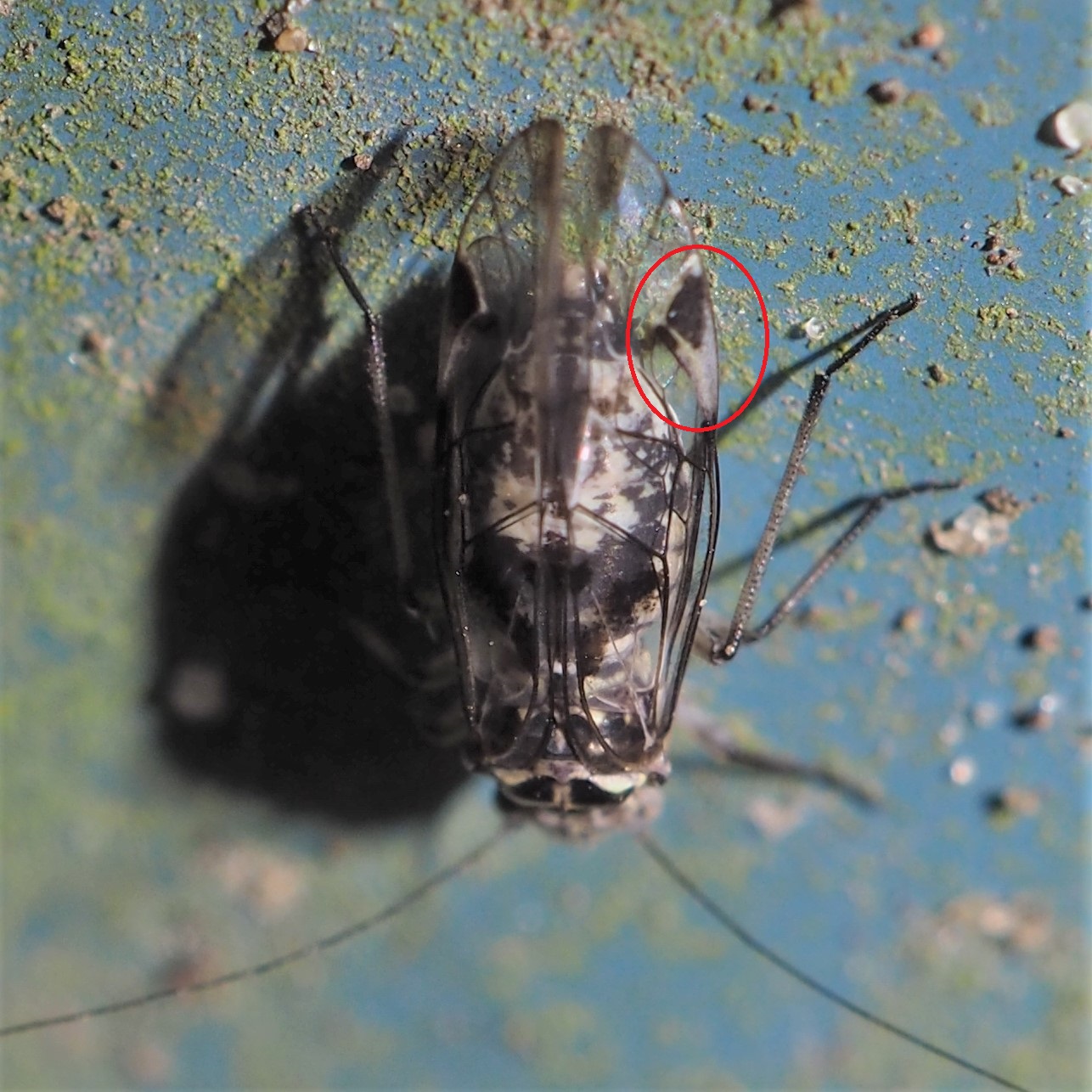
A week or two ago I started finding Barklice brown all over, and identified by Scott Shreve as a Large-winged Psocid. They were mostly fairly stocky-looking and a very "thick" brown pigment. But this week I began finding them with lightish bodies and wings, and a nice pinkish brown. I've got this fellow on iNat waiting to be accepted or rejected from this ID. The third one is Valenzuela flavidus.
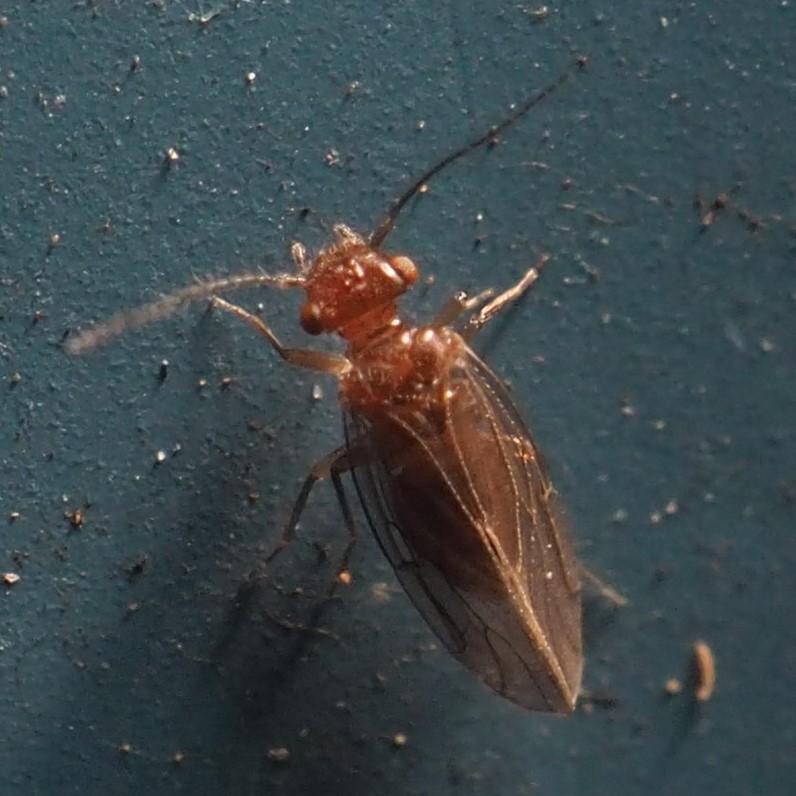
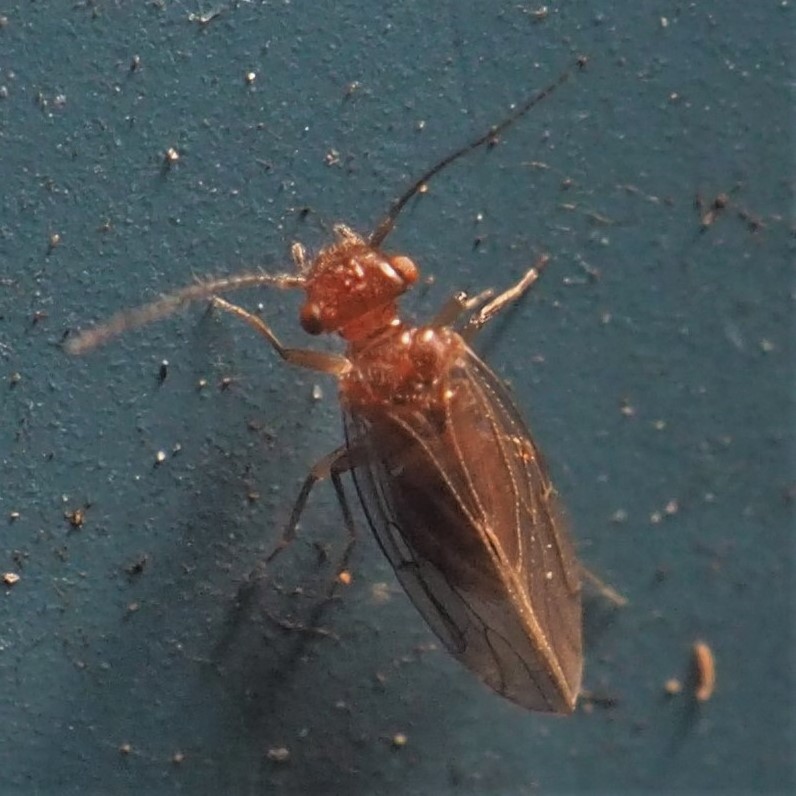
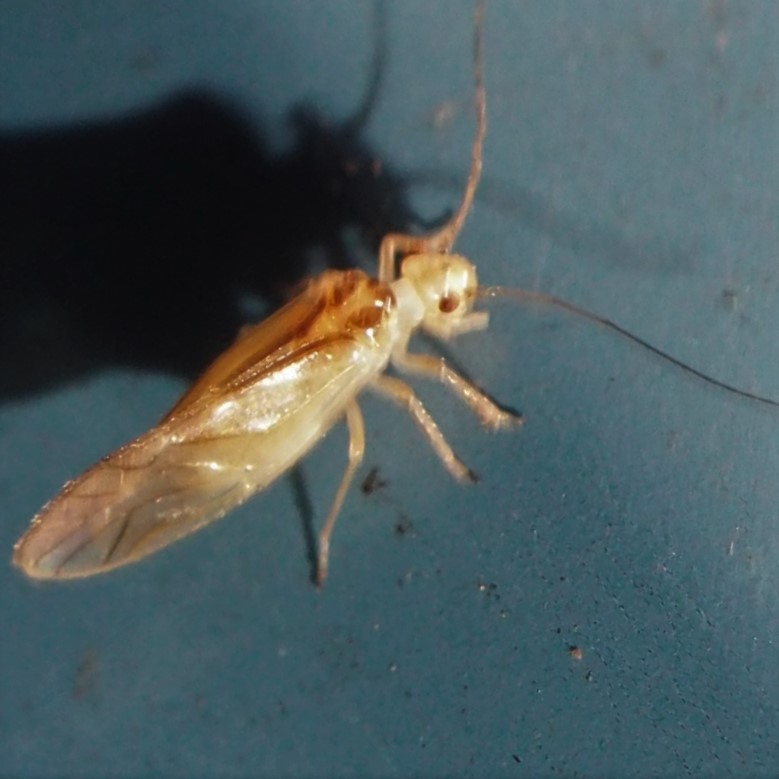
A few more of the usuals: Graphopsocus cruciatus, adult; nymph; eggs.
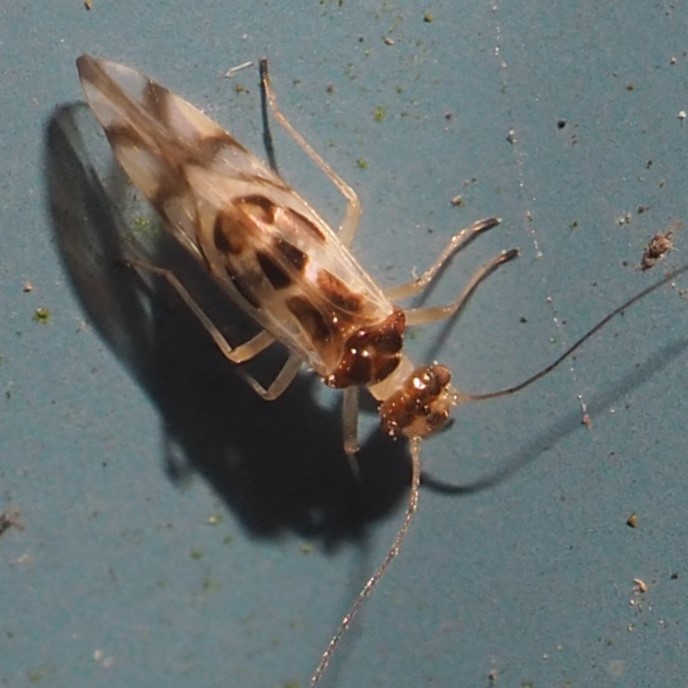
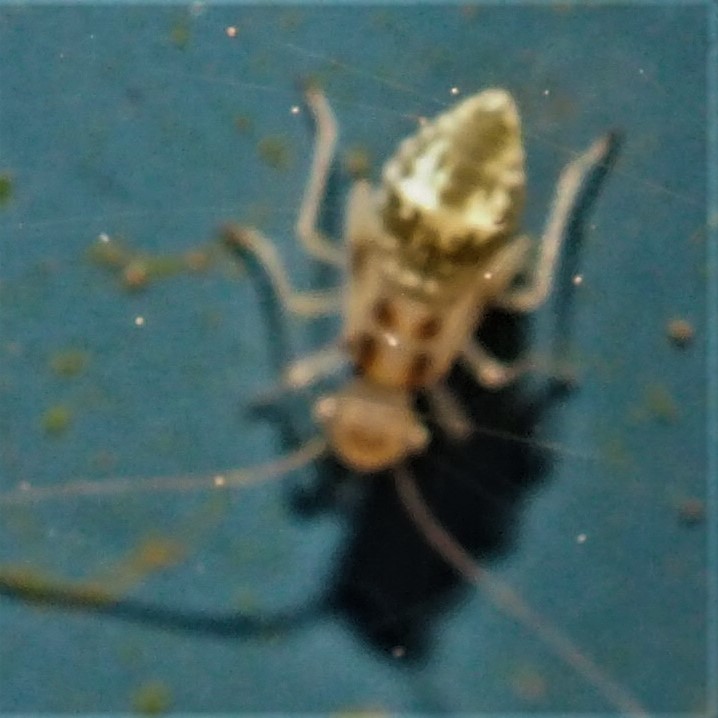
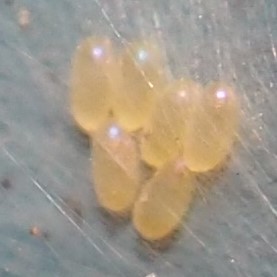
How about Beetles? We had one Asian Lady Beetle, and another kind of Lady Beetle, the Seven-spotted Lady Beetle (Coccinella septempunctata). The third one I don't recognize.
.
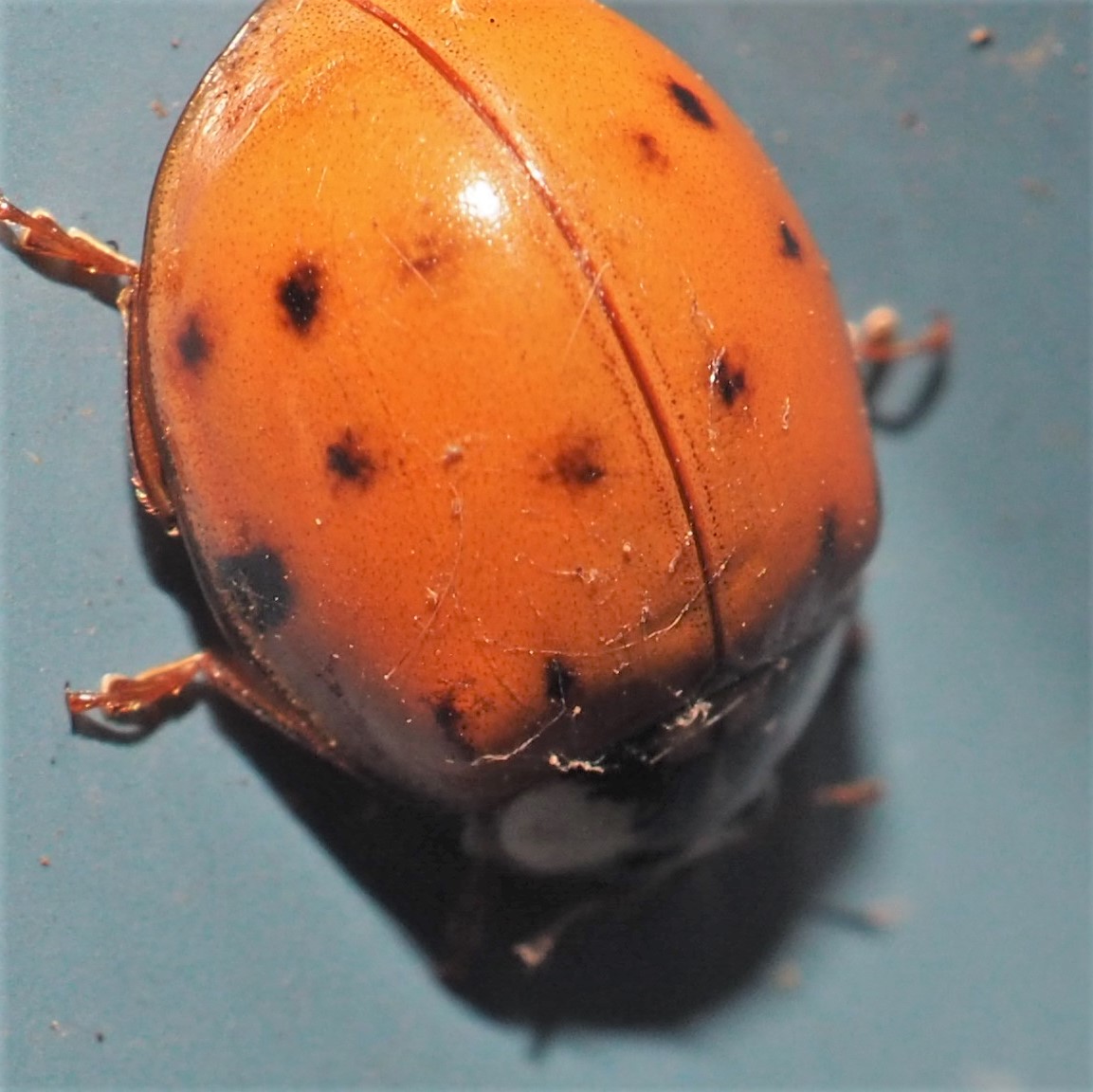
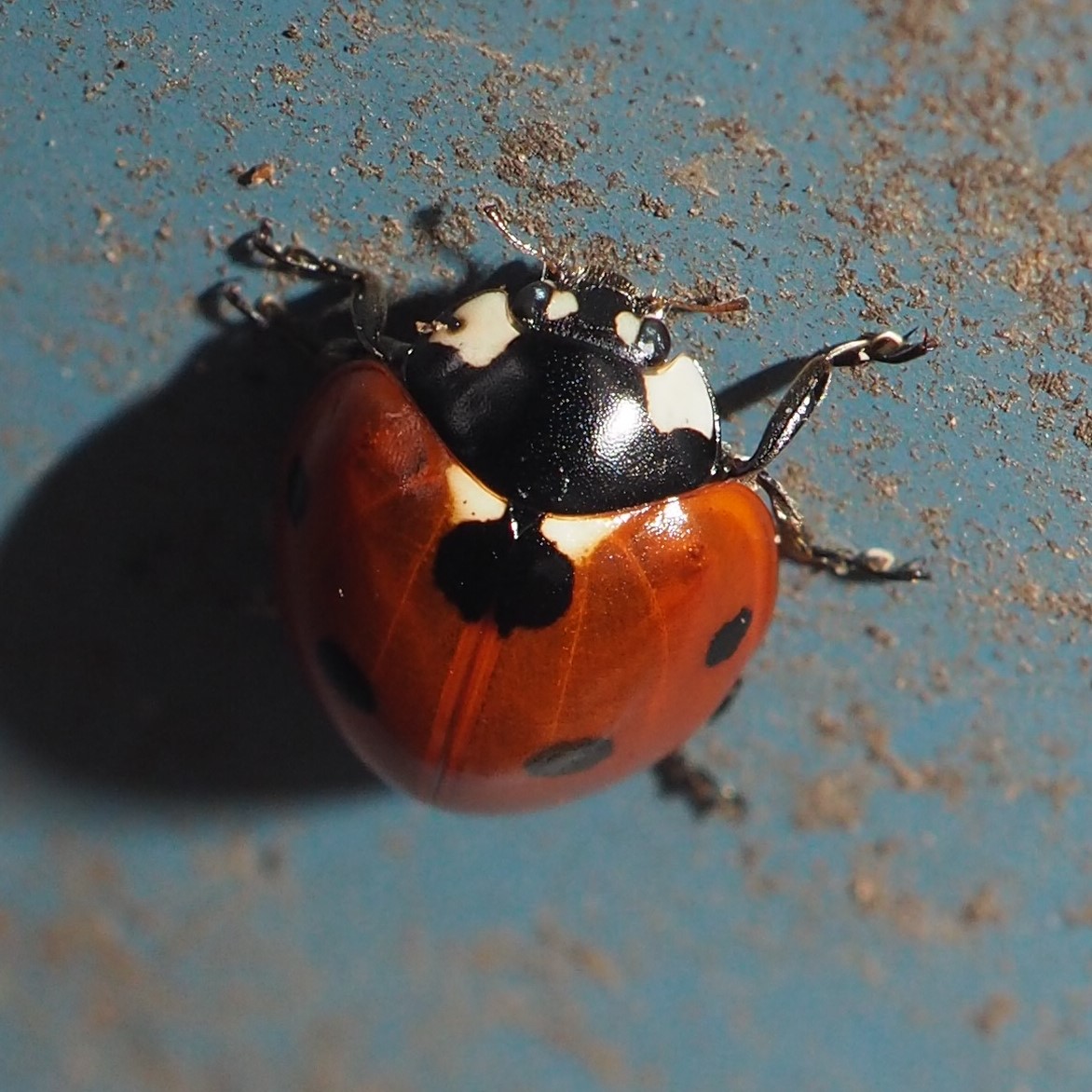
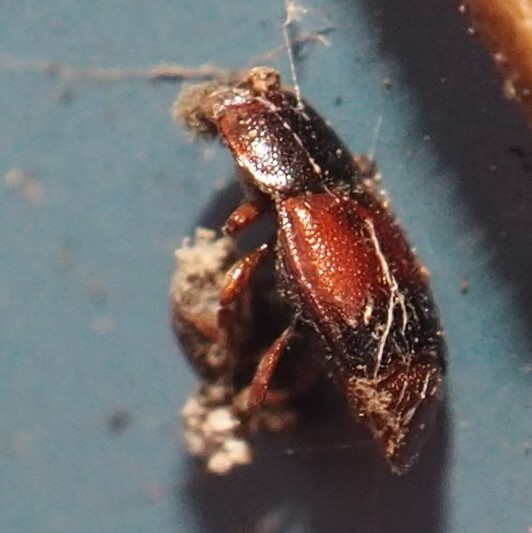
How about Bugs now? That one wounded Eastern Boxelder is still out there from time to time. And so are the Drymus Brothers, D.unus and D. crassus.
.
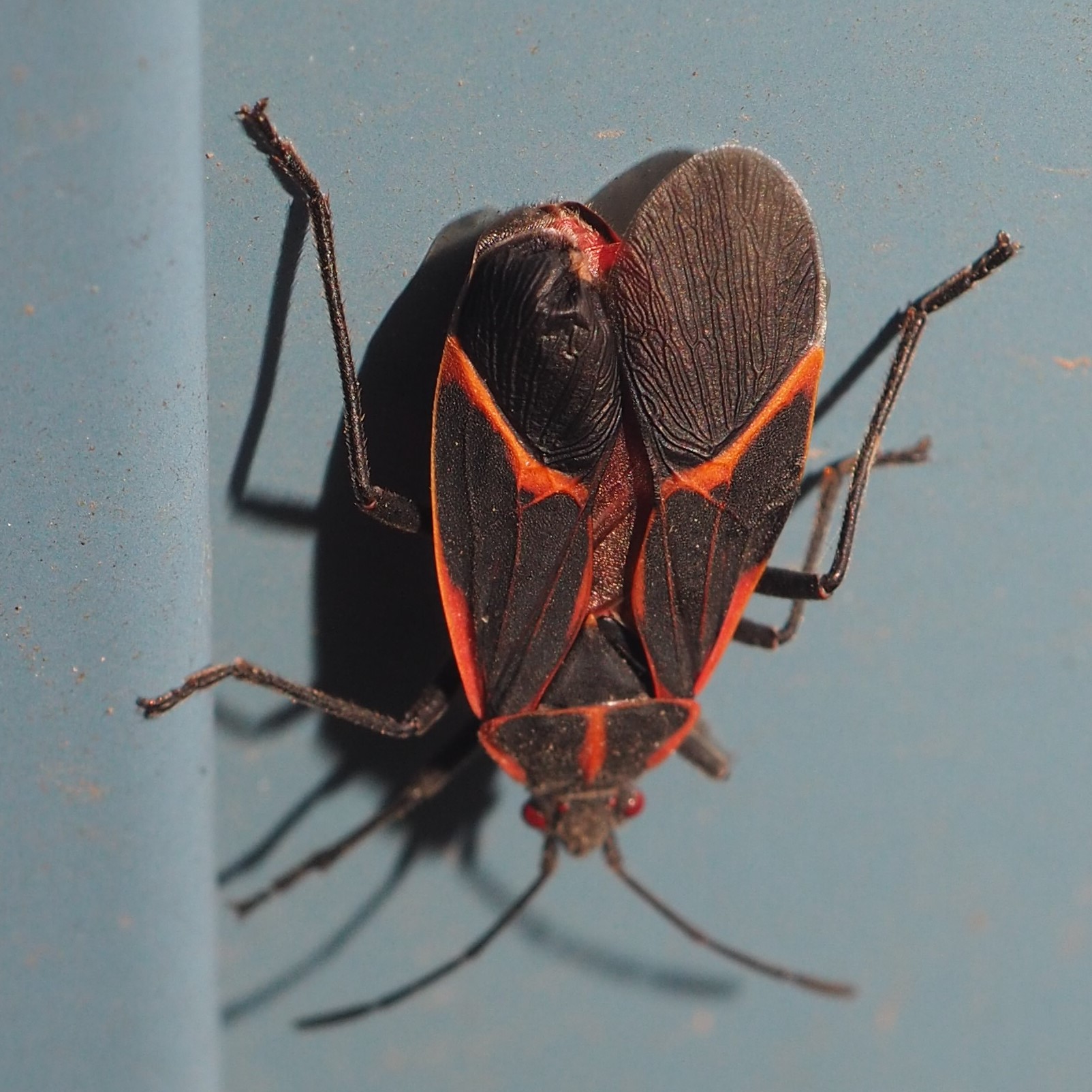
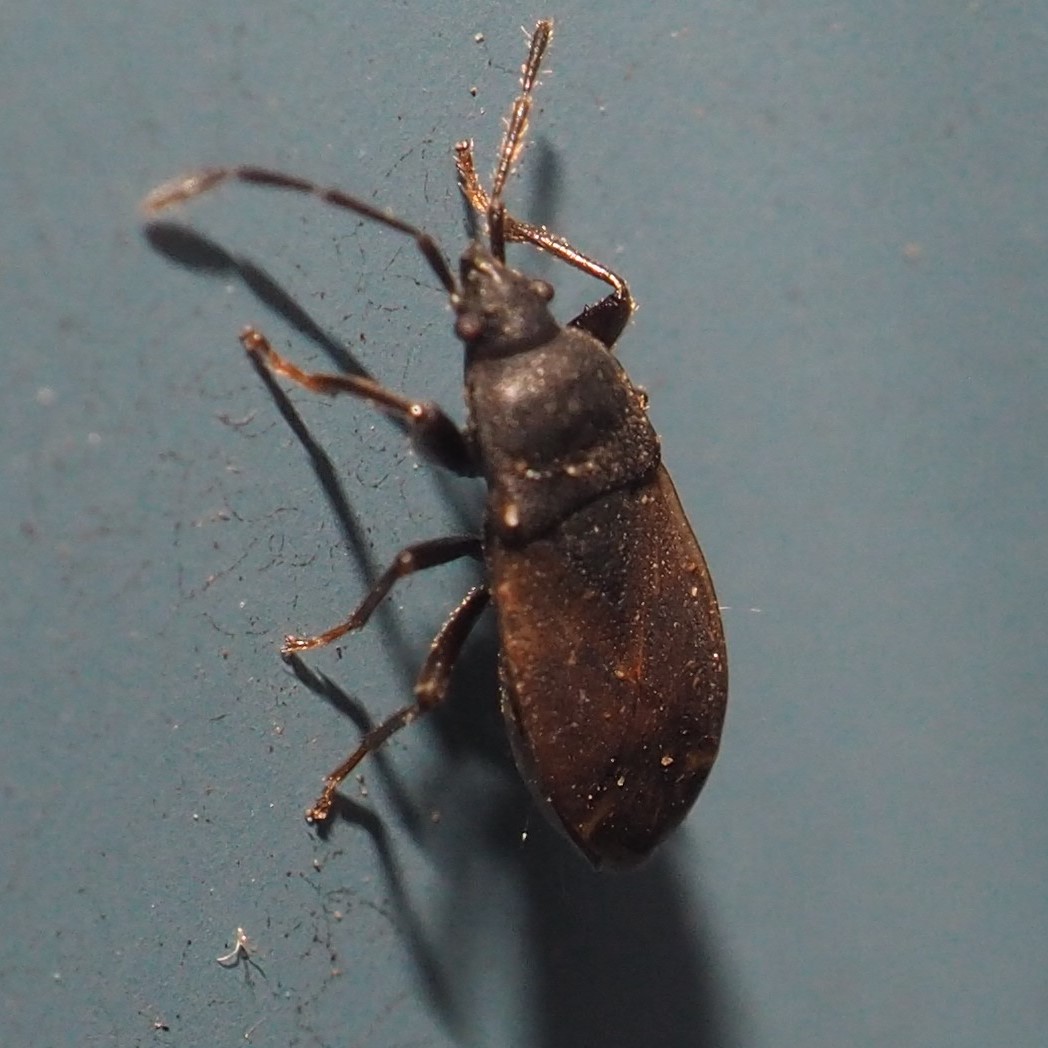
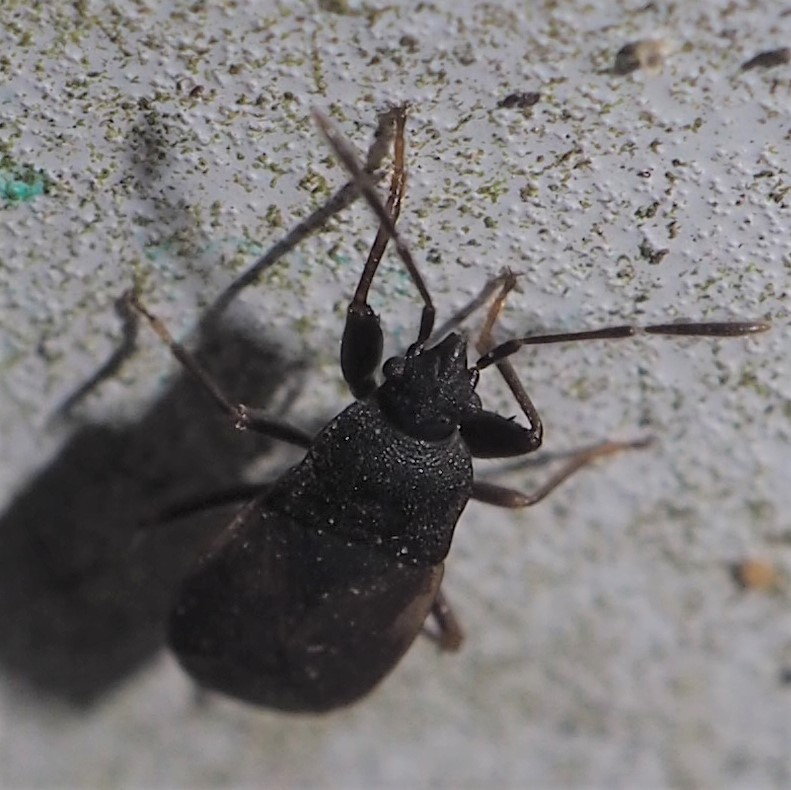
Here are three shots in the dark of this little Leafhopper, named by Kyle Kittelberger and Solomon Hendrix as Dikraneura arizona. It LOOKS to me like one of the Empoascini tribe, but that tribe is parallel to the real tribe Dikraneurini.
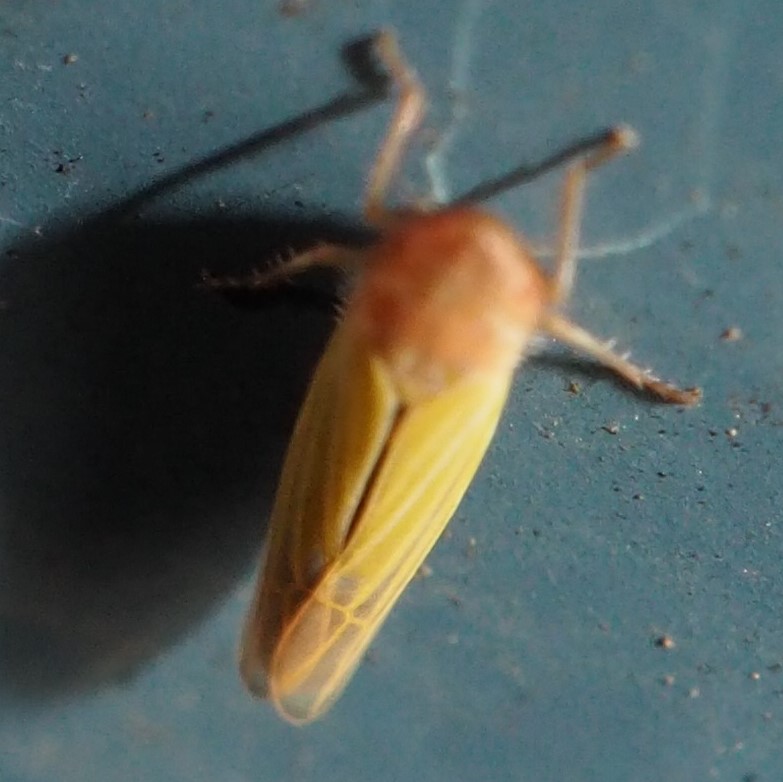
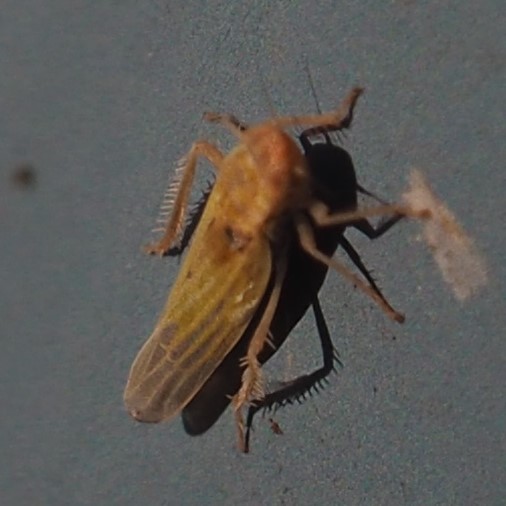
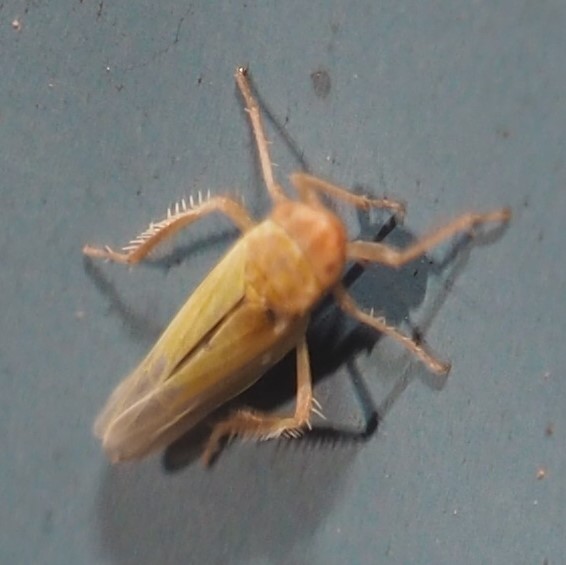
Finally, a yellow-striped Erythridula; an Eratoneura; and an Eratoneura ardens
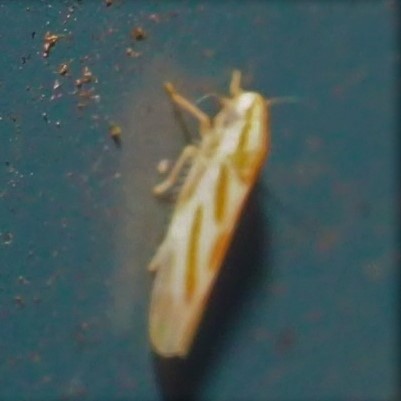
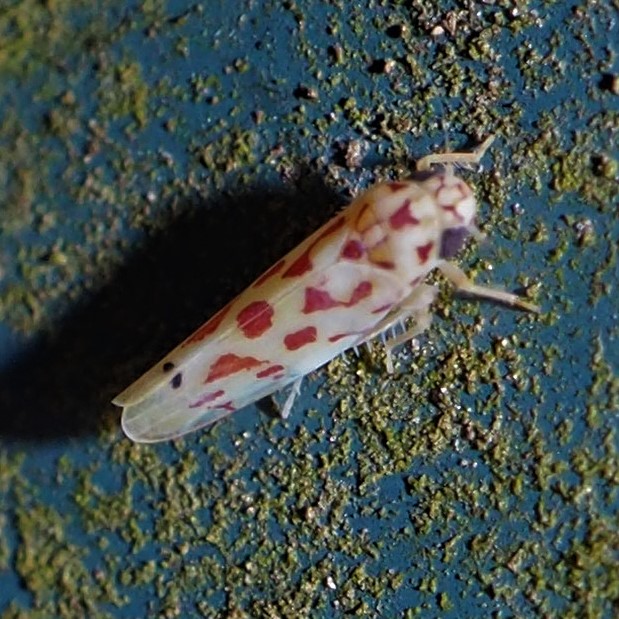
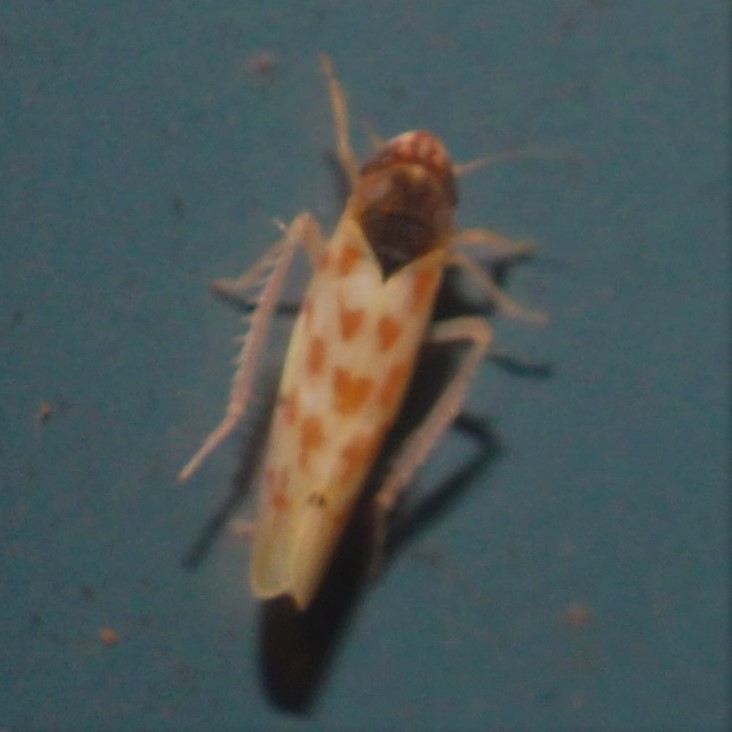
A few Caterpillars. The Balabans (John and Mary) or @thebals suggested this first one might be in genus Hypoprepia, whose adult might be the lovely Painted Lichen Moth, Hypoprepia fucosa. Picture 2 shows the Moth. Picture 3 is of the Looper that has been sticking its neck out for a couple of weeks.
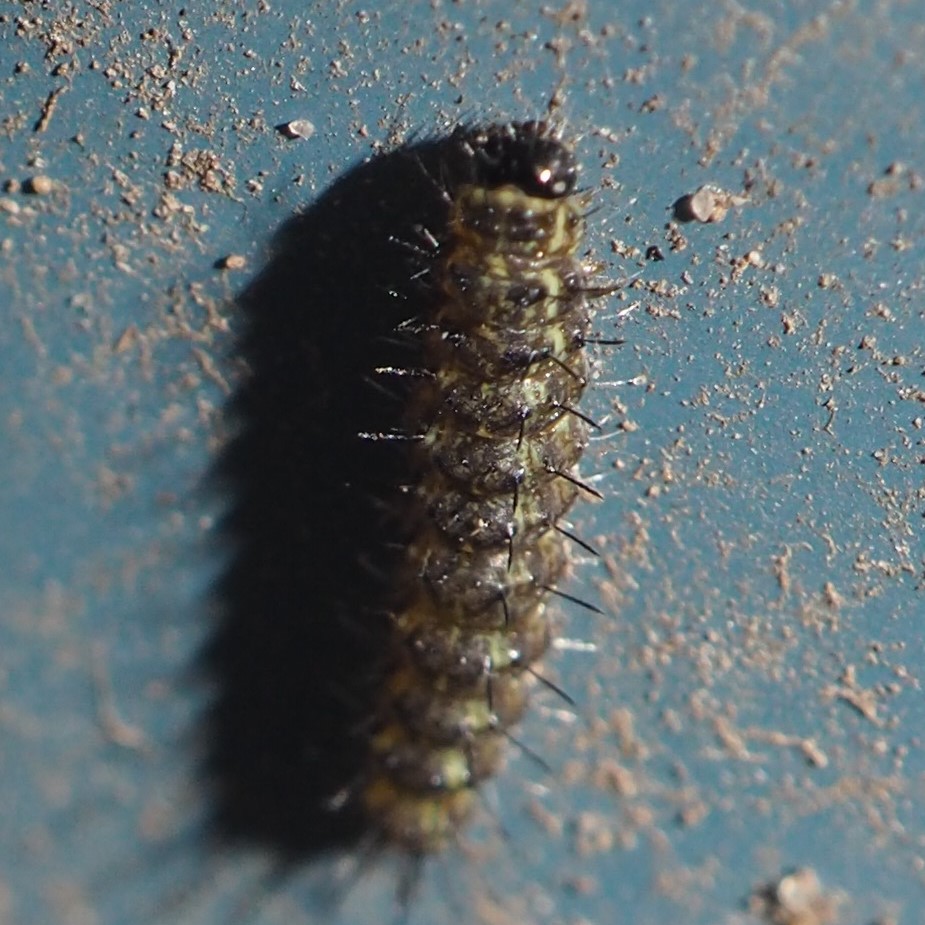

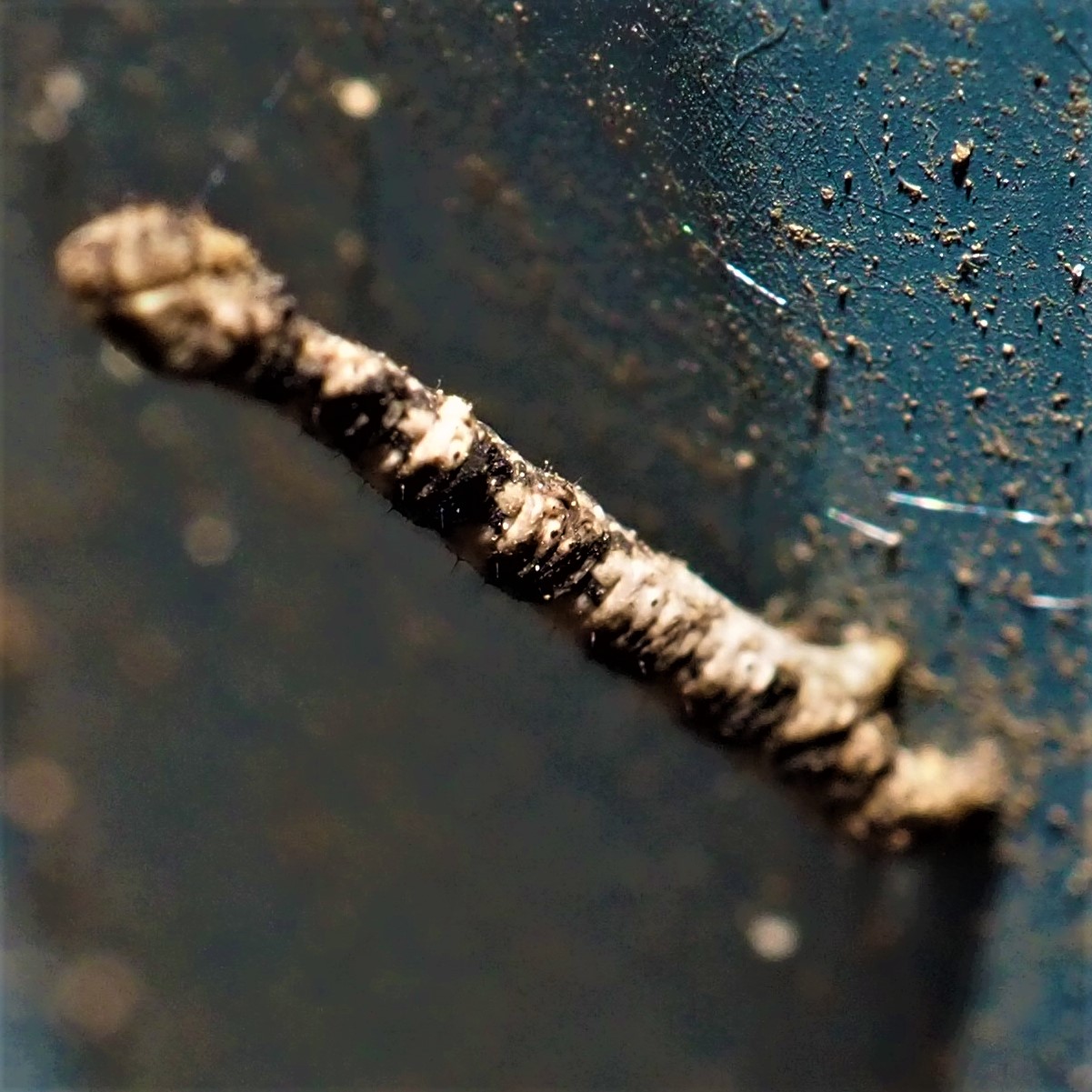
Surprisingly, there were quite a few of several types of Flies this week. The first is a bluish Fly from out front. Number 2 is a Midge, maybe a Winter Midge. Third MAY be a Fungus Gnat.
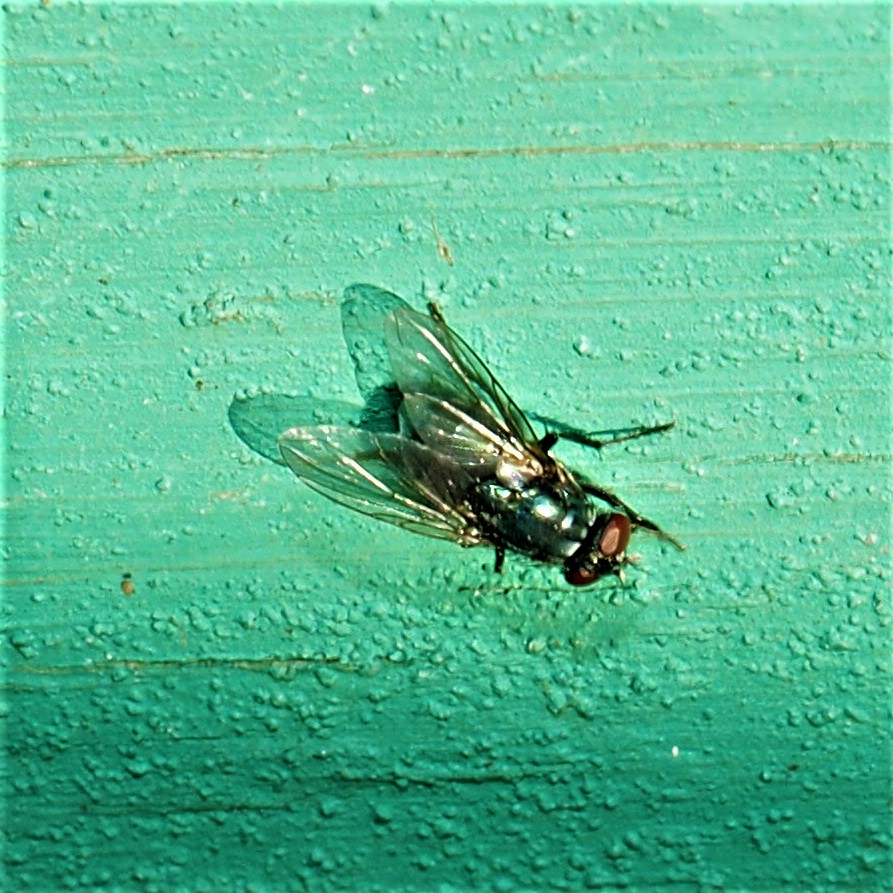
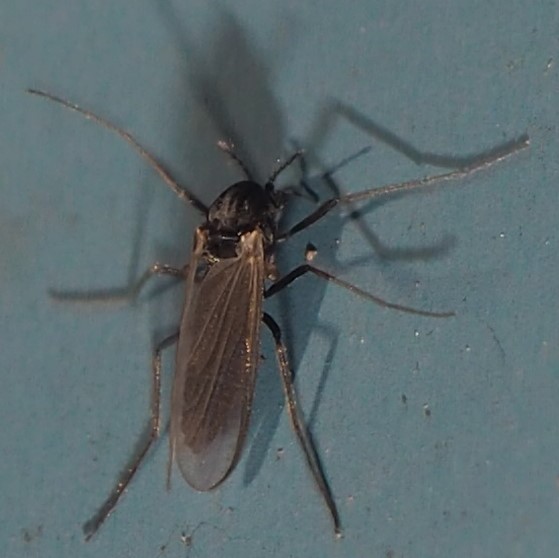

These first two seem to be genus Scatophaga (poop-eaters) and Suillia (don't know that kind of Greek). The third is a Fungus Gnat.

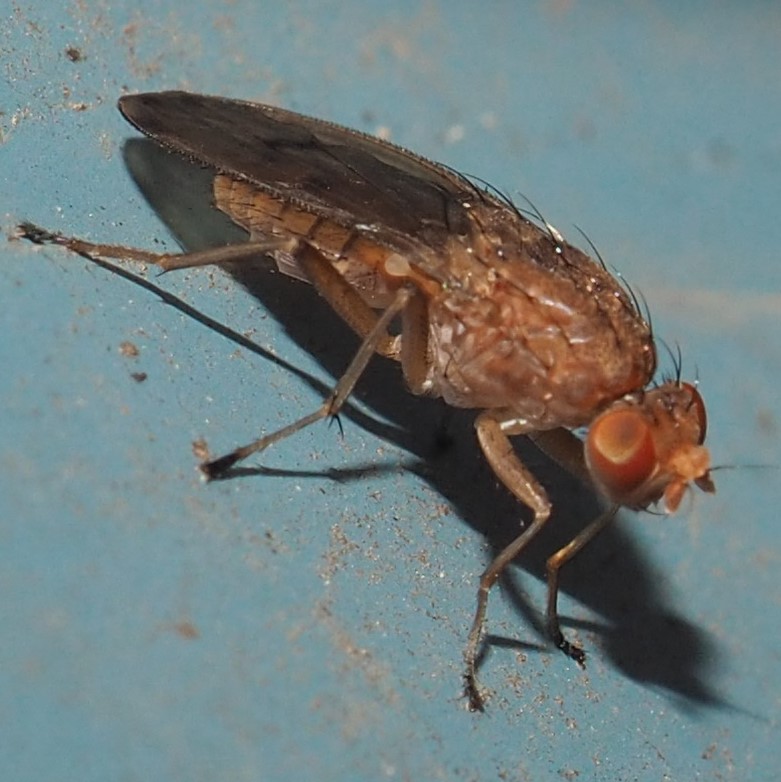

This first little fly has shockingly red eyes. The second looks like a House Fly or a close relation.
Third is another of those smaller Moth Flies.

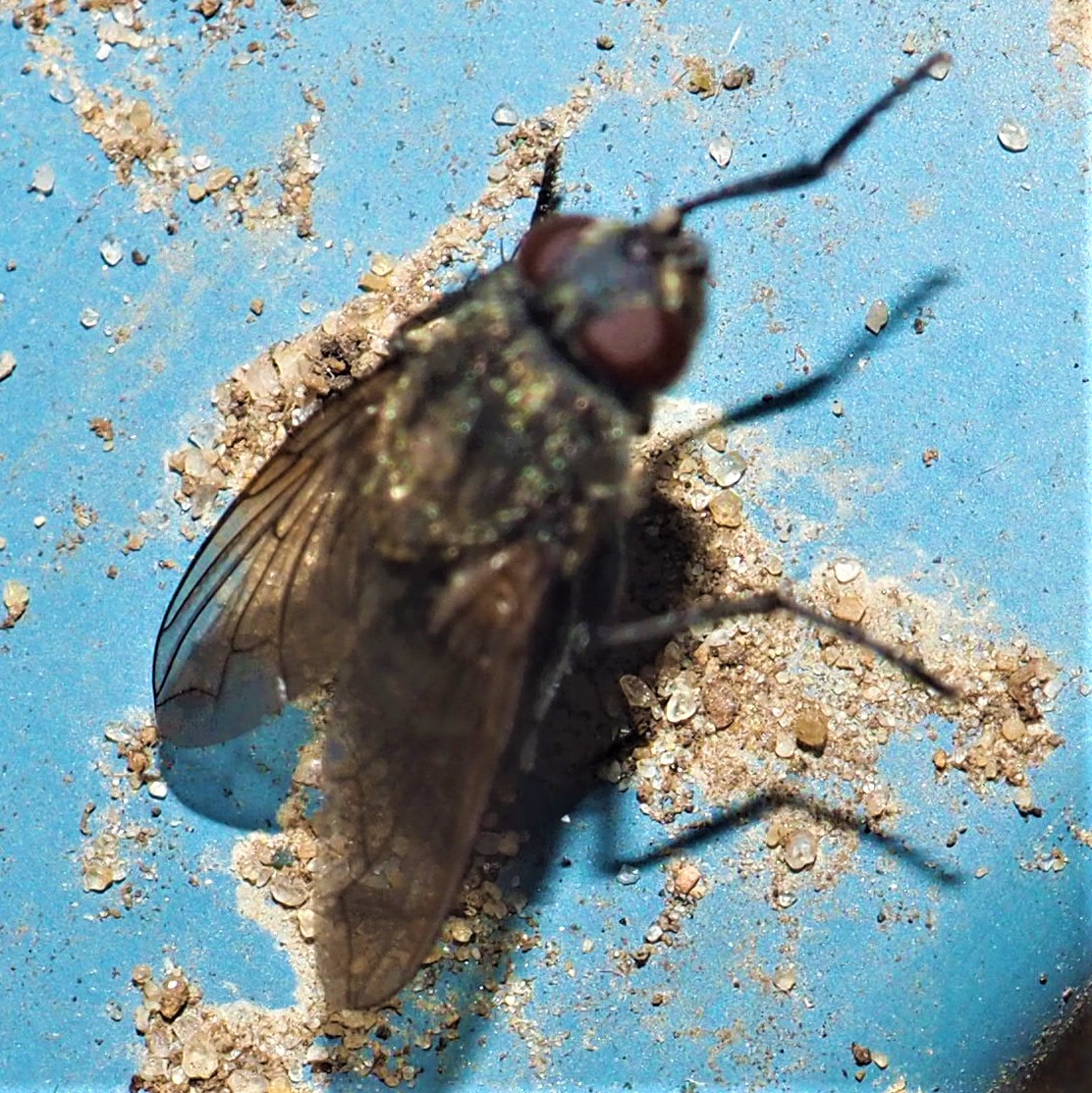
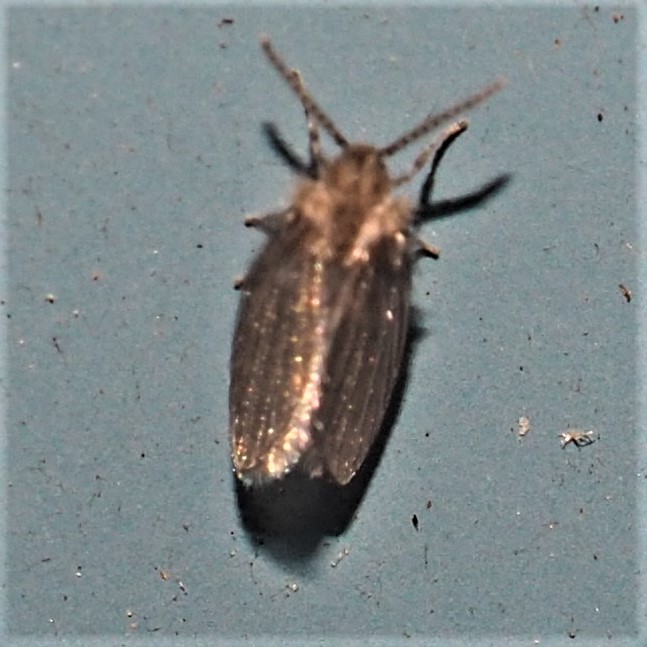
Here is that Eastern Harvestman, Leiobunum vittatum. There are just a few of them out these days. But they've got to eat, and there are surely some very small menu items out there. And here is Jadesy, getting used to indoor life... I still haven't detected any flower buds. What a conundrum!

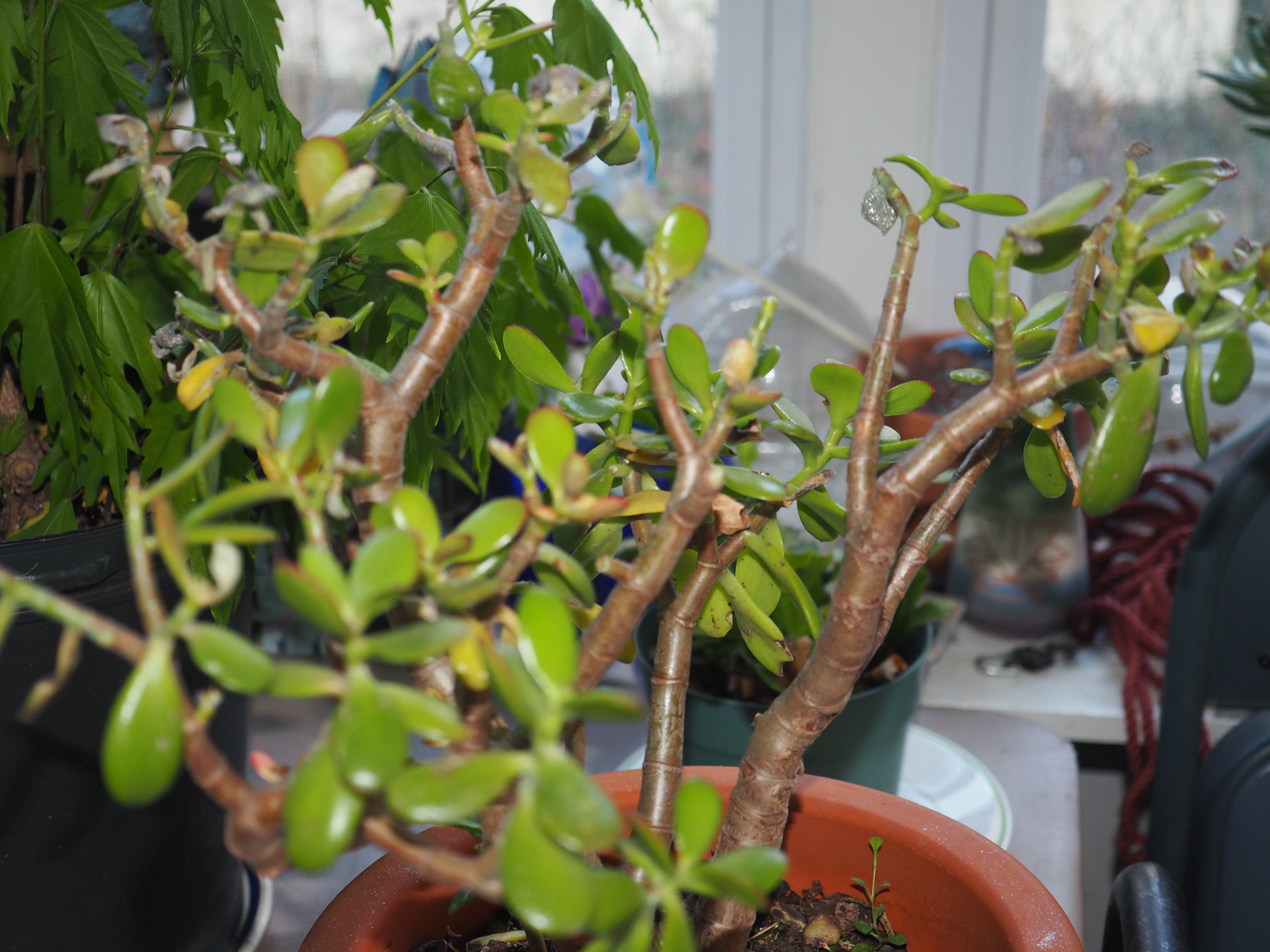
Here is that piece of bark or some other plant life with a light green creature living on it. Well, as soon as I sent out the blog last week, I got an email message from my old student and good friend, Wyatt Gaswick of the Field Museum, who suggested "I'm wondering if the mystery sandwich is lichen growing on a fallen piece of bark. The little legs might be rhizines, which look like lichen roots (like this picture but less extreme). If that's the case, the blue-green would be lichen, the deeper green would be algae or moss, and the brown would be the inner surface of the bark." He also sent this
picture. The "Rhyzines" on the bottom of the lichen convinced me!! (I had mistaken the rhyzines on the following picture from last week for little legs on that middle lichen.)
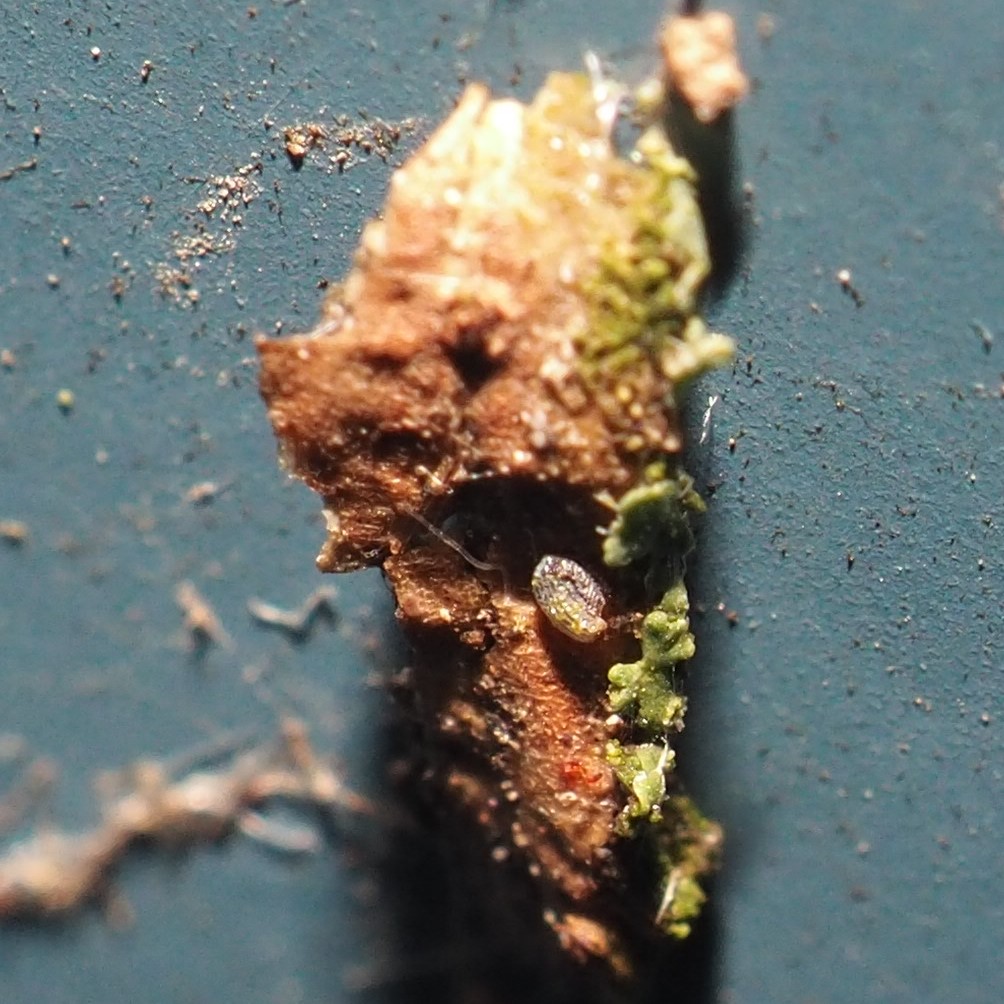
What a week! I didn't think (does this sound like last week's homily?) that there would be enough stuff to make a whole blog out of, but yesterday I got up to start this one. Shock of my life! I couldn't get into the server. Seems some mischievous someone had gotten in and posted nasty sentiments somewhere. So Jesse had worked on THAT and now I was locked out. This afternoon, I got mail that he had once more taken care of this problem and I set out to make this tiny blog. But then it turned out that we had more than enough info to fill up a bit more space than last week's blog. Hope you have the good solution to very much smaller problems. Thanks again Jesse, and to all of you, please forgive me for not doing more proofreading of the blog itself!!
Love, Martha - Oh, I forgot to add a fishy picture. Here you go (remember the fishes are way down at the bottom of the dark dark pond):
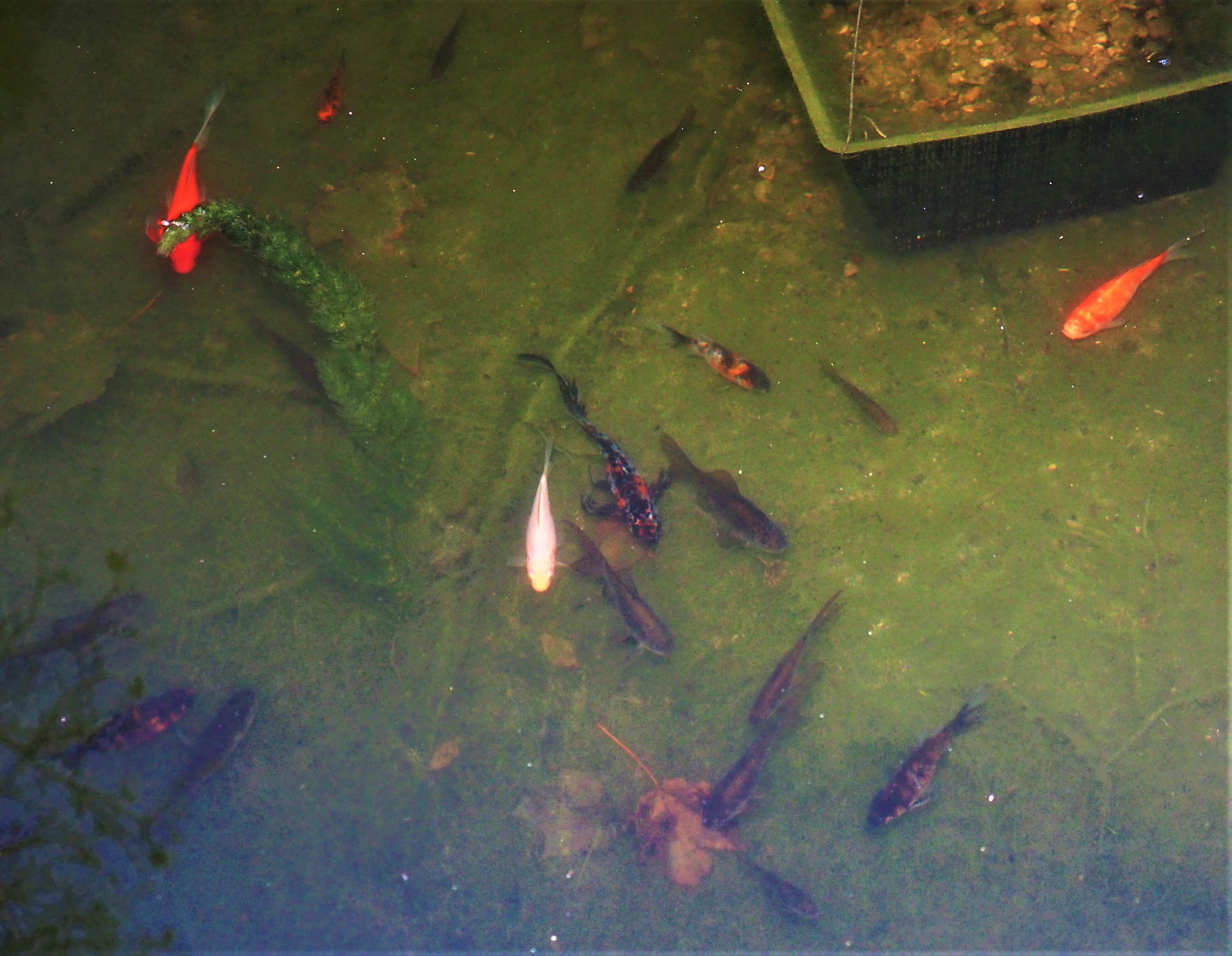
Back to December 12, 2021
Forward to December 26, 2021
Back to main menu
copyright Martha O'Kennon 2021























































